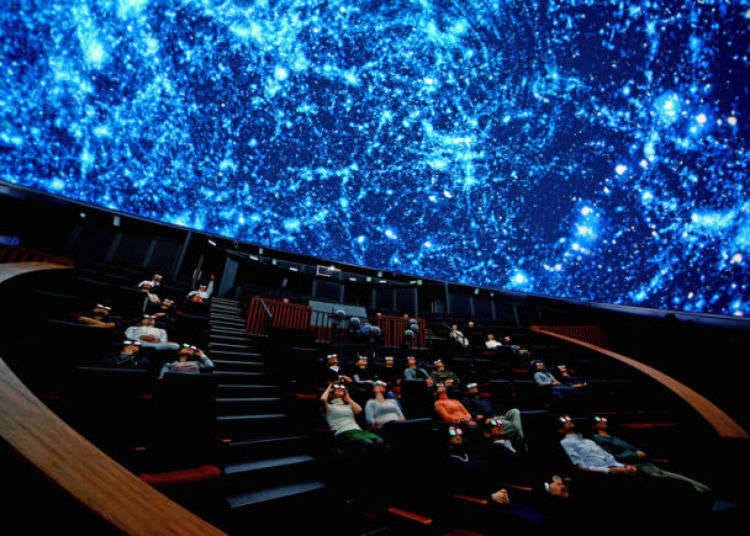
Japan's National Museum of Emerging Science and Innovation, otherwise known as Miraikan, is a museum that features the most advanced technology science has to offer in the areas of outer space and robotics.
Prominent Japanese scientists have pooled their knowledge to create countless exhibits for the museum that can be easily understood and enjoyed by anyone, young and old.
Many of these exhibits are not merely on viewing display, too - they were designed to encourage interaction! Visitors can look forward to spending a long time here without running out of things to see and do. Even after leaving, this museum gives you plenty of mental food to chew on about what our world may become in the near future.
Here are some amazing things about the museum that we think will be of interest to you!
- Table of Contents
-
- Miraikan is located in the popular sightseeing area of Odaiba
- The first planet earth model made of screens in the world
- Test driving personal mobility devices
- A slightly complicated interior design
- Infiltrating the International Space Station
- Nobel Prize-winning detector device
- Explore the workings and mechanisms of the human brain
- Robot ASIMO's demonstration show
- Experiencing the world's most advanced android technology
- Futuristic life enabled by science and technology
- Enjoying stereoscopic films at the Dome Theater
- Best souvenirs to get from the museum shop!
Miraikan is located in the popular sightseeing area of Odaiba
Odaiba, where the museum is located, is a place of interest that's already very popular among foreign tourists. This means it will be very accessible and is in fact just a 5-minutes walk from the Tokyo International Cruise Terminal Station or 4-minutes walk from the Telecom Center Station, both on the New Transit Yurikamome.
The entry price for adults is 630 yen, while it'll cost 210 yen for minors under 18, but there are special sections and temporary exhibitions that may charge a separate fee. The museum also holds open houses a few times each year where visitors can view regular exhibitions free-of-charge, for example on Children's Day (May 5) or Respect-for-the-Aged Day (September 15).
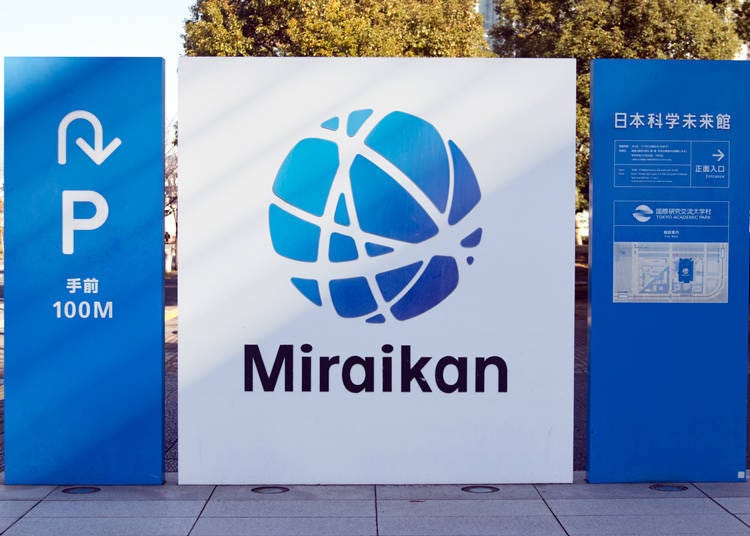
The first planet earth model made of screens in the world
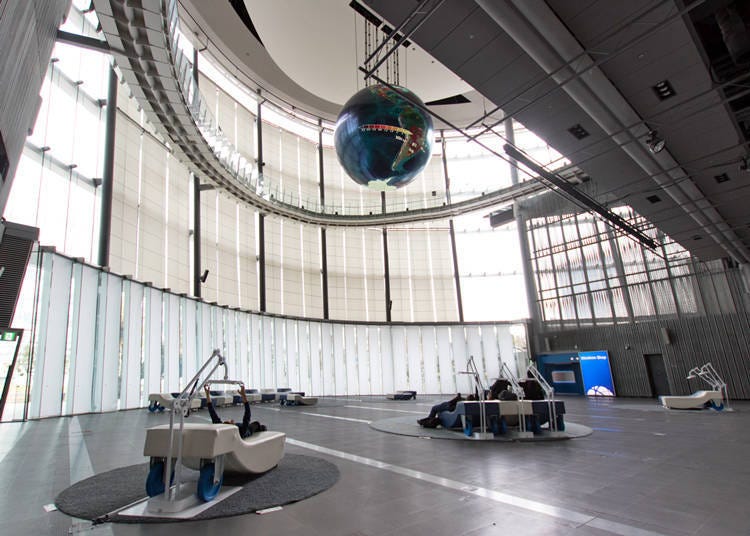
Upon stepping into the museum, the first thing to greet you is Geo-Cosmos, a planet earth exhibit that hangs from the ceiling in the middle of an open space that goes all the way up to the 6th floor.
This planet earth exhibit is the first in the world to feature OLED display panels. It makes use of the latest technology and scientific data to show off our beautiful blue planet in high-definition as it would appear from outer space, with image resolution reaching up to 10 million pixels or more.
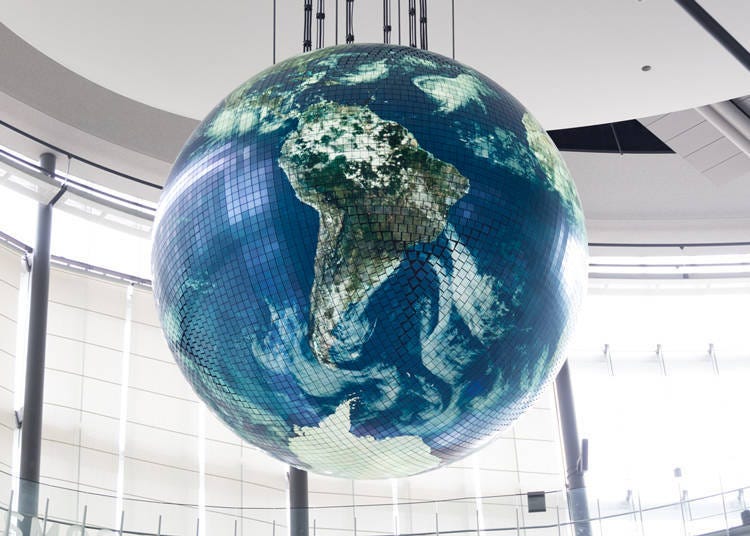
This isn't a mere static display of what earth looks like from space, too. Combined with the usage of various scientific information like seasonal changes in solar radiation and night views of the earth, the exhibit is able to help visitors visualize planet earth in a number of different forms.
The incredible visuals and data points are also widely employed in a special thought-provoking video entitled Digging the Future, presented with modern rap music and designed to make viewers really think about the mark we as humans are leaving behind on the earth as our legacy.
Digging the Future focuses on the Anthropocene era, a proposed geological age created by human activities such as the continuous production of plastics and concrete.
A mesmerizing combination of scientific data points with input from researchers and artists, this video production can be said to be one of the highlights of Geo-Cosmos that many look forward to during their visits.
Test driving personal mobility devices
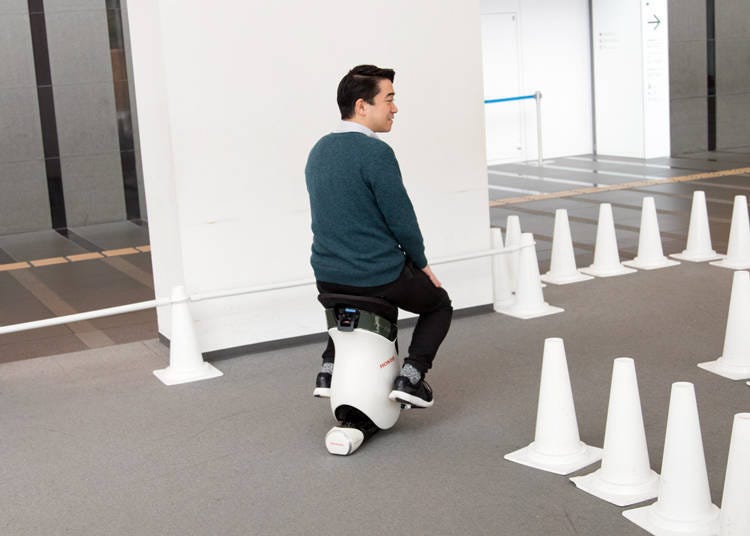
On the first floor is a booth where museum-goers are welcome to test drive the Uni-Cub, a personal mobility device (PMD) developed by Honda using robotics technology.
As such, the PMD is equipped with excellent balance control and moves forward or to the sides with a mere tilt of the rider's body. The rider is also able to control the speed of the device and how sharply it turns. It's a comfortable device to ride on once you're used to it, and the hands-free navigation is one of its most appealing features.

Once you're at the Uni-Cub booth, you're asked to choose between a quick trial or serious session with the device. The quick trial costs 300 yen and allows you to try out the device within the booth space for five minutes.
The serious session costs 600 yen and you'll be zooming around within museum grounds following the lead of a booth staff for an exhilarating 15 minutes of fun.

Since this is a special booth, participation fee is separately charged from the museum entry fee. The quick trial is available in English and Mandarin Chinese, while the serious session is available in English. Participants must be at least 145 centimeters tall (about 4′9") and weigh less than 100 kilograms (about 220 pounds) to take part in the trial.
A slightly complicated interior design
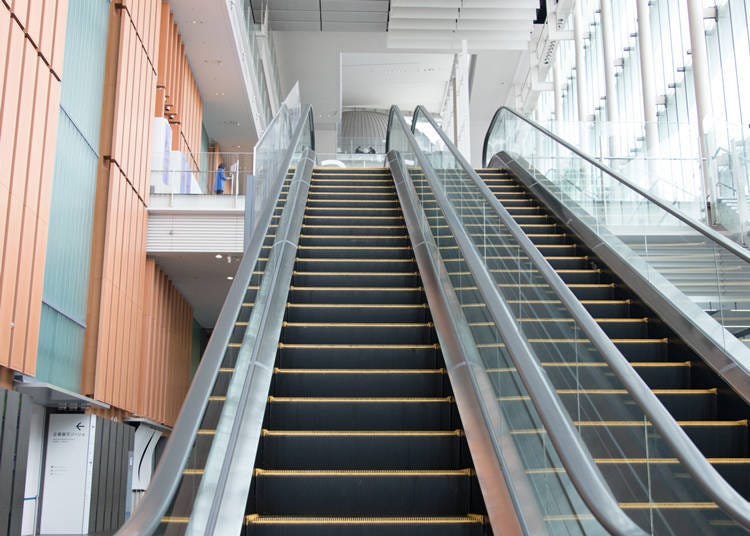
Since the museum's interior structure is a little more complicated than usual buildings, we'll start with that first. You'll find that the building consists of a 1st floor, followed by a 3rd, then 5th, 6th, and 7th floors. Here's our recommended sequence of floors: Tour the 1st floor first, then hop on the escalator to go to the 5th floor. When you're done with the 5th floor, go down to the 3rd floor.
The 6th floor is where the Dome Theater (reservation required) is located, so if you're here for videos and motion pictures, this is the floor you want. Visitors needing some rest and food should head to the restaurant space on the 7th floor.
*The restaurant space on the 7th floor will be undergoing renovations until March 2020.

When going from the 1st floor to the 5th, the first thing you see upon arrival is the Miraikan Café at the entrance of the 5th floor. The high ceiling gives the shop a spacious feel that's perfect for relaxing in. Slide into one of the comfortable table seats and recharge yourself for the next round of exhibit exploration!

The cafe's "Experimental Drink (500 yen, tax included)" is a popular beverage. This refreshing drink contains herb tea and lemon granita, an interesting blend that produces a curious color when thoroughly mixed together, hence the suspicious-sounding name. Regular cafe finger food like "Hot Dog (400 yen onwards, tax included)" and "Soft Serve Ice-Cream (380 yen onwards, tax included)" are also available.
Infiltrating the International Space Station
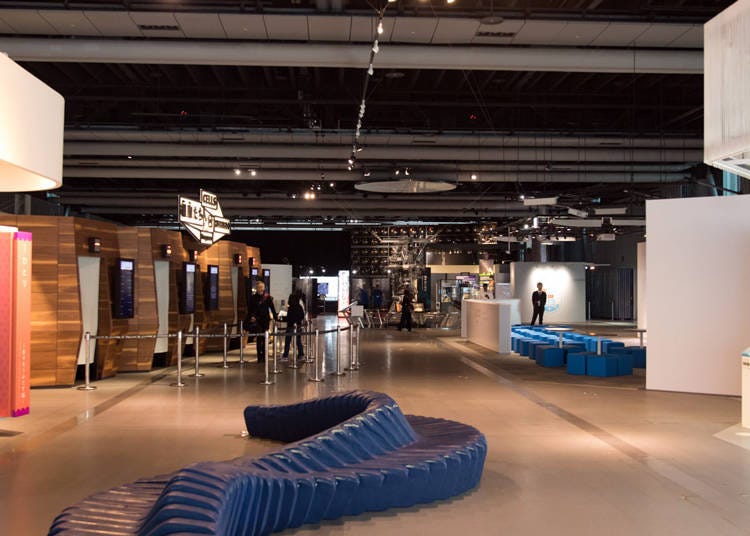
It's time to take a closer look at the main area on the 5th floor, where you can find plenty of intriguing exhibits based on the theme of "Outer Space and Life".

The International Space Station (ISS) needs no introduction among fans of space travel, but here's your chance to get to know this amazing structure more intimately. How do astronauts go about their lives in a building suspended in space 400 kilometers (about 248 miles) above ground? Step inside the model of the space station's residential module to find out!
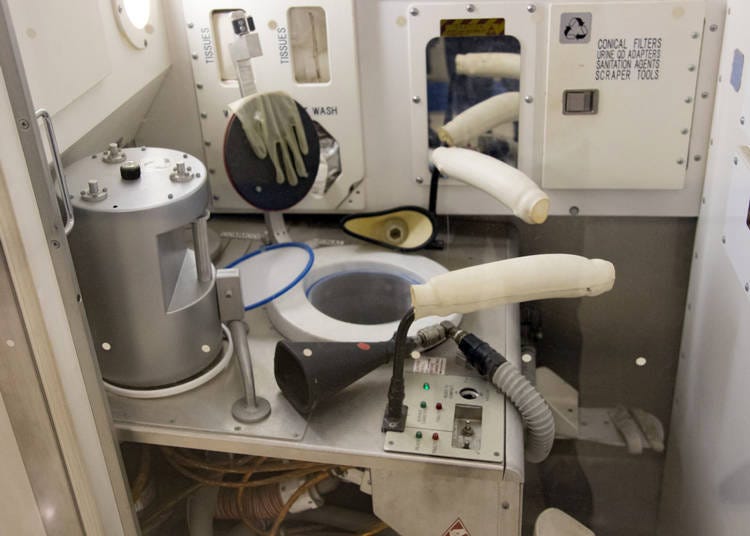
The model structure contains replicas of tools and devices necessary for space living and explanations on their usage - for example, a zero-gravity toilet and how to operate one. With so many things to take note of, going to the toilet does seem like quite a chore in outer space!

On the outside of the model exhibit are autographs from Japanese and American astronauts who have visited Miraikan before. In December 2019, the first astronaut to be sent into space by the Chinese space program, Yang Liwei visited Miraikan and his autograph is likely somewhere to be found on the exhibit as well!
Nobel Prize-winning detector device
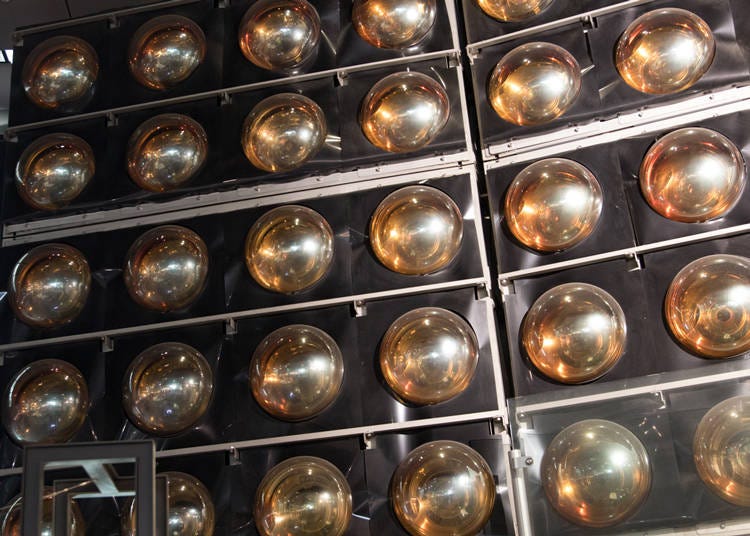
Ever heard of the word "neutrino"? It refers to an electrically neutral subatomic particle that has very little interaction with other matter and usually passes through normal matter without hindrance - from the human body to the earth itself. As a result, these particles are very difficult to detect and observe.
Japan is the international leader of neutrino research, and Japanese scientists have even won Nobel Prizes for their work on the subject in the years 2002 and 2015. What they used for their experiments is the Super-Kamiokande neutrino observatory that was built 1,000 meters (about 3,300 feet) underground. A 1/10th scale model of Super-Kamiokande is on display on the 5th floor.
Explore the workings and mechanisms of the human brain
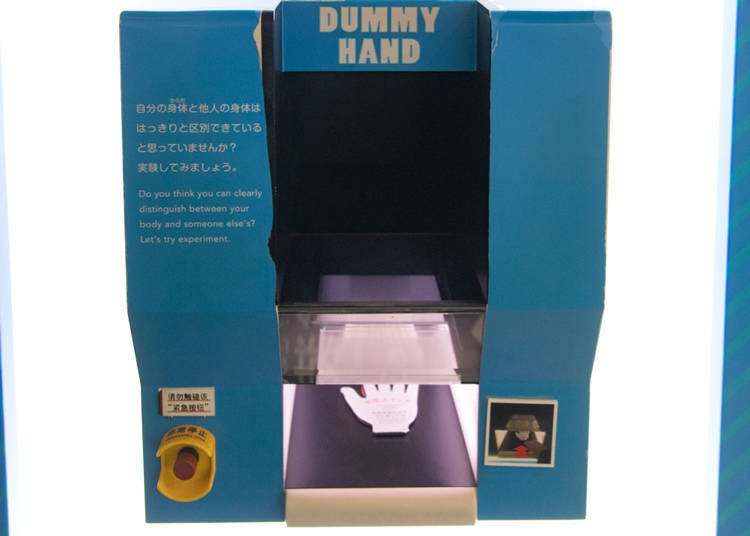
On another section of the 5th floor is an interesting experimental device. You insert your right hand into the device and a fake image of your hand is displayed on the screen. When the hand on the screen receives certain stimuli, even though nothing actually happens to your hand, your brain reacts to the stimuli as if these were happening to your real hand itself! This device is meant to teach visitors that the sensations we feel are created by our brains.

The chimpanzee experimental device is of interest as well. This apparatus pits you against a chimpanzee in a memory game where numbers are flashed across the screen and you try to remember as many numbers as you can.
Bet you didn't know that chimpanzees generally have better memories than humans, though! Although that means you'll probably struggle to beat the competition in this game, we still recommend trying it out for the sheer fun and novelty factors!
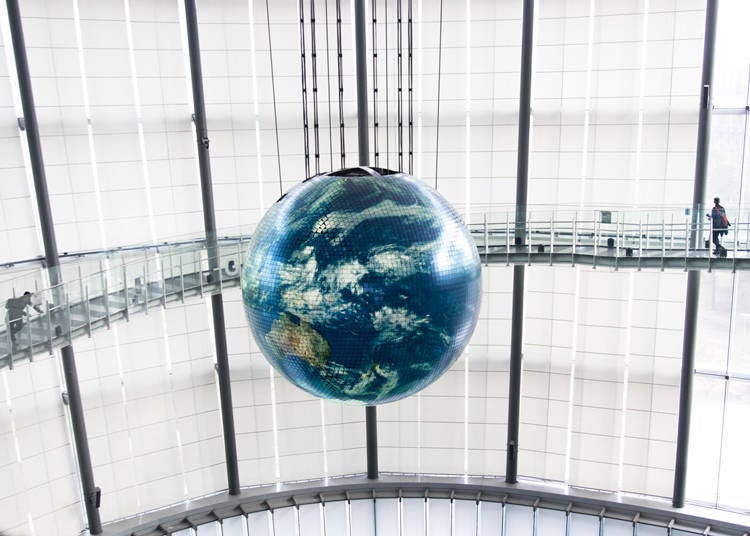
Once you're done touring the 5th floor, head to the 3rd floor by walking on the path that loops around the Geo-Cosmos display you saw from the 1st floor. The globe is quite a sight to behold from this pathway too!
Robot ASIMO's demonstration show
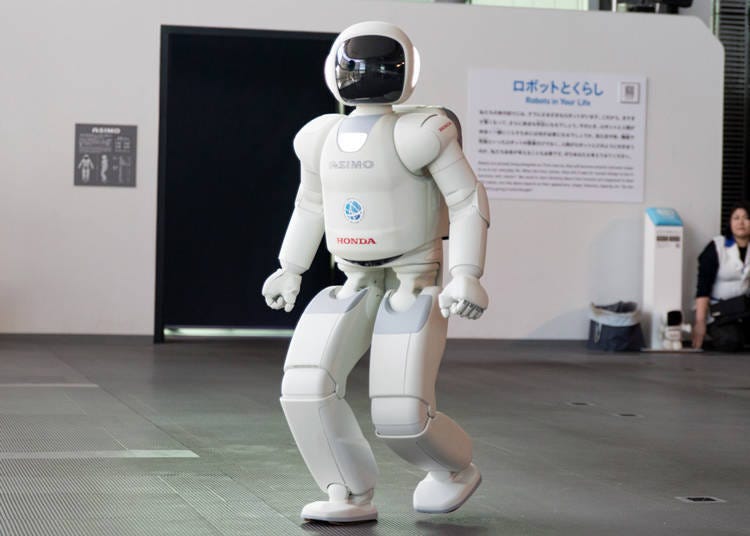
The 3rd floor is robotics themed and contains many exhibits about robots and information science technology. One of the prime exhibits here is ASIMO, the latest model of humanoid robot developed by Honda.
This autonomous robot is able to walk around without colliding into others by estimating their projected paths. It's also capable of distinguishing individual speech from three different people speaking at the same time.

ASIMO will appear on the show floor during certain time slots to give a presentation about a future where robots and humans will co-exist together.
The way it moves around so naturally will certainly make you feel like the near-future is probably nearer than we think!
ASIMO's presentation starts at 11:00 a.m., 1:00 p.m., 2:00 p.m., and 4:00 p.m. - a total of four slots. Each presentation will take about 10 minutes.
Experiencing the world's most advanced android technology
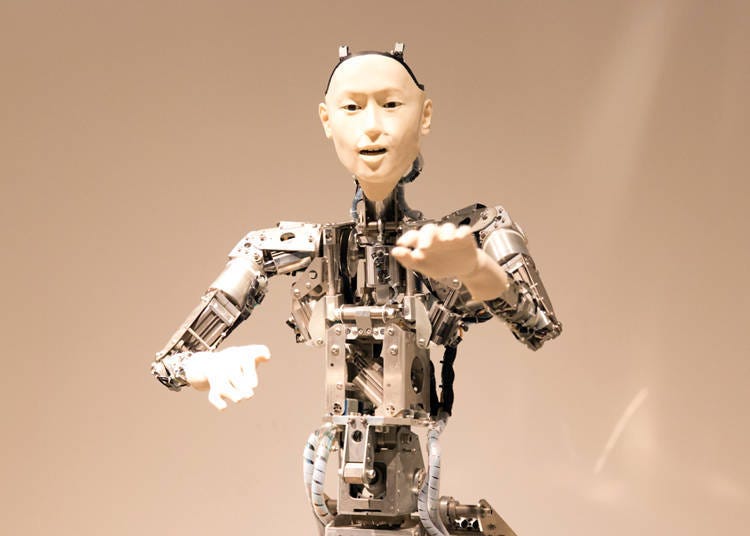
Another prime exhibit on the 3rd floor is Alter, an amazingly human-like android that is capable of complicated and delicate movements with its 42 joints.
The android's irregular actions are not pre-programmed, but self-created based on sensor data from its feet and a neural network that simulates nerve cells found in the human brain.

Otonaroid is another android featured in this section. It was specially designed to mimic human facial expressions and behavior.
Demonstrations are held once during weekdays, at 11:30 a.m. During weekends and on public holidays, a 3:30 p.m. slot is added to cater to larger crowds. Each demonstration will last about 10 minutes.
During the demo, visitors are taught that Otonaroid can be manipulated remotely by someone in a control room next door to hold conversations with humans. This feels like a sneak peek of a potential new method of communication in the near-future indeed!
Futuristic life enabled by science and technology
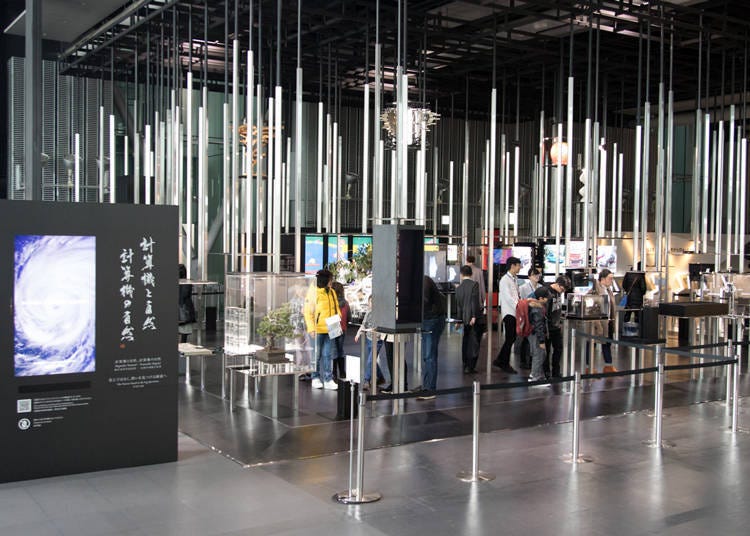
But wait - that's not all the 3rd floor has to offer! Check out the exhibit that helps visitors visualize the mechanism behind data transmission on the internet using movements from black and white balls. It's sure to help you better understand the workings behind the digital network we've all come to rely on.
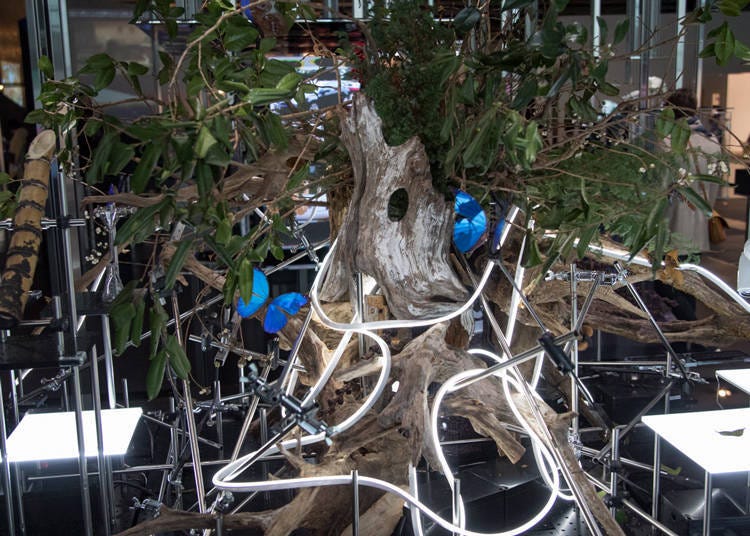
Another interesting exhibit here is Computers and Nature, which is based on the concept of computers and nature fusing together in the near-future. You could almost say it seems eerily prophetic.
The central structure is an actual tree, and it's surrounded by a mixture of real butterflies specimens and mechanical butterflies. It certainly makes one think deeply about how what sort of future advanced computer technology will soon bring about for human society.
Enjoying stereoscopic films at the Dome Theater
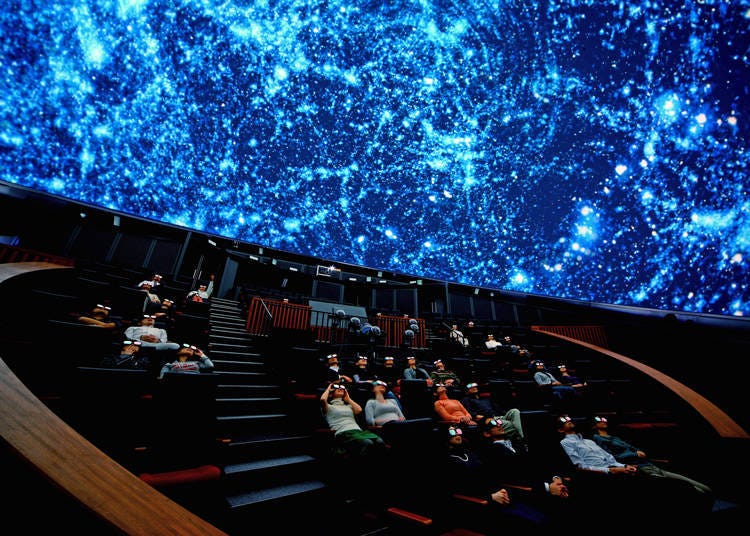
The Dome Theater located on the 6th floor is equipped with four projectors capable of screening high-definition videos that almost seem lifelike when viewed through the lens of a pair of 3D goggles.
Each film shown here is about half an hour long, and the theater runs a regular schedule of two to three types of programs. The film about outer space is especially impressive and thus very popular among museum-goers. Other popular programs include seasonal specials that often become hot topics for discussion as well.
Price: Adults 310 yen; Minors (under 18) 100 yen
*English audio guides are available.
*The dome will be undergoing renovation until March 15, 2020.
Best souvenirs to get from the museum shop!
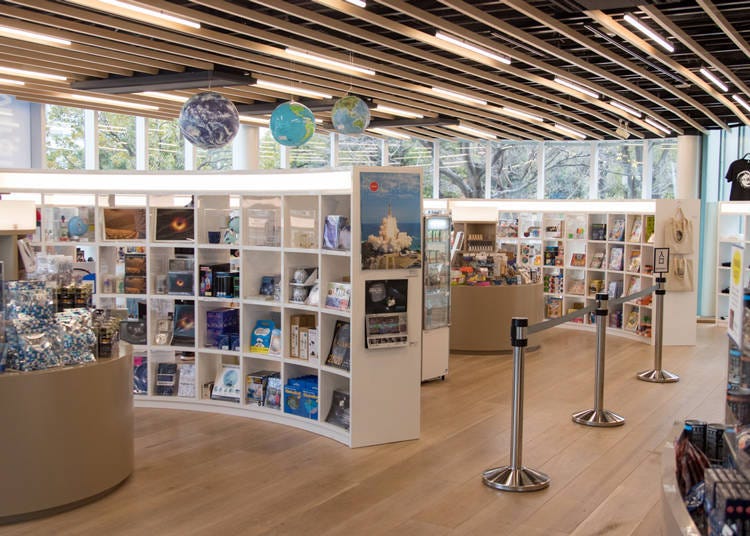
The museum shop on the first floor of Miraikan contains experiment kits, stationery, and plenty of other museum-related merchandise.
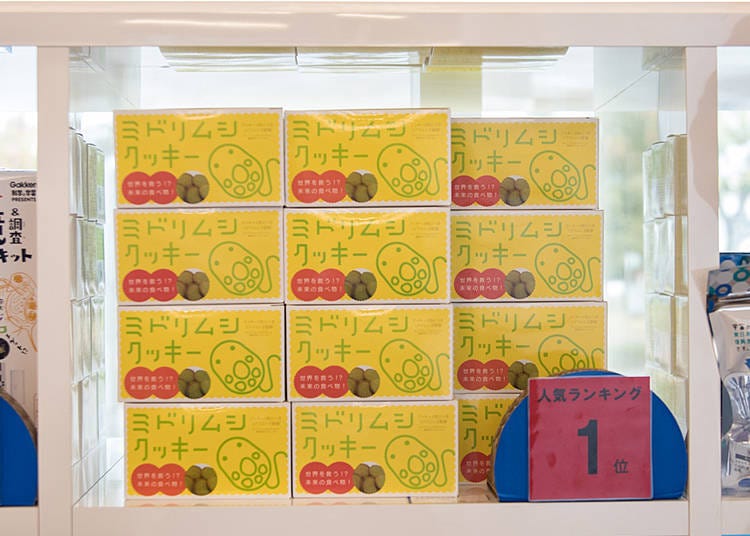
Surprisingly, the most popular souvenir here is the humble cookie. This isn't any mere cookie, though. It's a cookie that contains about two hundred million euglena! Euglena is a highly unusual algae that has the properties of both plants and animals.
This algae is full of nutrients that humans need and is easy to cultivate, which is why researchers are looking closely at how it may fare as a raw material for food in the near future. Whatever it eventually becomes next time, the cookie is as delicious as it can get right now so definitely don't sleep on it!

Japanese space food is another perfect souvenir to bring home from this trip! The "Space Onigiri" that was developed by Japanese corporations as food for the ISS is a riceball that returns to its original, delicious form after being soaked in hot water that's about 80C (176F).
To combat the dulling of taste buds that occurs in a zero-gravity environment, the rice is made to be much more sticky than usual, and some work has been done to ensure the taste of the onigiri remains pronounced even after it has cooled down.
Salmon is used as filling and so far, the onigiri has received rave reviews from the astronauts who have had them. The most scientific way to know for sure is to try it out for yourself too, of course!
English translation by: Huimin Pan
-
National Museum of Emerging Science and Innovation日本科学未来館
- Address 2-3-6 Aomi, Koto-ku, Tokyo-to
-
Nearest Station
Transport: 5-minutes walk from Tokyo International Cruise Terminal Station on the New Transit Yurikamome; 4-minutes walk from Telecom Center Station on the New Transit Yurikamome; 15-minutes walk from Tokyo Teleport Station on the Rinkai Line
- Phone Number 03-3570-9151
Hours: 10:00 a.m. – 5:00 p.m.
Closed: Tuesdays (open when Tuesday falls on a public holiday), end of year and start of year holidays (December 28 to January 1)
*May be open on some Tuesdays during spring, summer, or winter break
Price: Adults 630 yen; Minors (below 18) 210 yen *Entry fee for special event exhibitions collected separately.
*Prices and options mentioned are subject to change.
*Unless stated otherwise, all prices include tax.
Popular Tours & Activitiess
Recommended places for you
-

Tokyo Disney Sea®
Theme Parks
Chiba Suburbs
-

Tokyo Metropolitan Government
Landmarks
Shinjuku
-

Naritasan Shinshoji Temple
Temples
Narita
-

The Tokyo Station Marunouchi Building
Landmarks
Tokyo Station
-

Ameyoko Shopping Street
Old Towns (Shitamachi)
Ueno
-

The Imperial Palace
Other Architecture
Tokyo Station
-

This Winter, Godzilla Takes Over Haneda Airport
by: Guest Contributor
-

Strawberries, Style, and Tokyo’s Coolest Neighborhood: Winter Afternoon Tea in Kichijoji
by: Guest Contributor
-
Ad

Discover the "Miraculous Forest" in the Heart of Tokyo: The Institute for Nature Study (9 Minutes from JR Meguro Station)
-
Ad

Complete Guide to Ueno's National Museum of Nature and Science, the Perfect Place to Visit on Rainy Days or With Children
-

New in Ginza! Air BicCamera Ginza Opens with a Faster, More Convenient Shopping Experience
by: Guest Contributor
-

How to Get Don Quijote's Exclusive 2025-2026 Winter Gift (+Tax-Free Savings)
Inspiration for Accommodations
-

Enjoy Mt. Fuji from the Comfort of Your Room! Recommended Ryokan with Mt. Fuji View
-

Stay Near the Cherry Blossoms! Hotels for Cherry Blossom Viewing in Tokyo
-

Family-Friendly Hotels with Free Shuttle to Disneyland: Convenient Access for a Magical Stay
-

Top Ranked Hakone Hotels with Mt. Fuji View: Enjoy Stunning Scenery from Your Private Space
-

Convenient Tokyo Hotels with Airport Shuttle: Ideal for Families and Heavy Luggage
-

Stunning Tokyo Tower View Hotels: Enjoy Spectacular Scenery from Your Private Space
-

Convenient Asakusa Hotels with Kitchens: Ideal for Extended Family Visits
-

Experience Luxury: Hakone's 10 Best Five-Star Accommodations
-

Enjoy Mt. Fuji Autumn Leaves! Top Hotels Near the Popular Autumn Leaves Corridor
-

Experience Hakone Fall Foliage from Your Room with Stunning Views
-

What Do Japanese Really Buy At The Supermarket? Take A Look At Japan’s Top 10 Sweet Snacks!
-

Numazuko Kaisho in Ueno: Good Quality, All-You-Can-Eat Seafood for Just US$12!?
-

Cherry Blossoms in Tokyo: 12 of the City's Best Places for Sakura in 2025
-

Healthcare in Japan for Tourists: What to Do When You Get Sick or Injured in Japan
-

Japanese Whisky, Umeshu, Sake and More! Check Out Kakuyasu's Top 12 Liquor Souvenirs
-

Complete Guide to Buying Japanese Medicine in Japan: Phrases and Vocabulary You Need to Know
- #best ramen tokyo
- #what to buy in ameyoko
- #what to bring to japan
- #new years in tokyo
- #best izakaya shinjuku
- #things to do tokyo
- #japanese nail trends
- #what to do in odaiba
- #onsen tattoo friendly tokyo
- #daiso
- #best sushi ginza
- #japanese convenience store snacks
- #best yakiniku shibuya
- #japanese fashion culture
- #best japanese soft drinks












